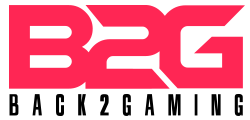As businesses expand and evolve, they tend to select an IT solution capable of meeting changing consumer preferences, an expanding competitive environment, and overall business requirements.
While selecting software solutions that support sustained and continuous business expansion may seem like a no-brainer, selecting an agile methodology for development may prove more complicated.
Business owners and executives undertaking software development projects often become involved in IT management for the first time. Selecting an effective agile development approach is crucial to creating effective solutions within budget and timeline constraints.
Hiring experienced offshore software development companies USA and their expert programming team will allow you to determine the appropriate agile process for your company project.
Though your outsourcing partner is helping, it is still crucial that you understand how any change in methodology affects both the cost and quality of the end product of your business.
In this post, we aim to help readers gain an understanding of agile development by exploring its various types and determining which one best suits their project development process.
Understanding Agile Development
Agile development is an iterative and flexible approach to software development that emphasizes collaboration, adaptability, and continuous improvement. It was created in response to traditional, linear development methodologies like waterfall models which often result in rigid processes with delayed feedback as well as difficulties adapting quickly to changing requirements.
Agile development divides the development process into several iterations known as sprints, each lasting several weeks and focused on producing working increments of software. Key principles and concepts associated with agile development include:
1. Cross-functional Teams
Agile teams tend to be composed of individuals from diverse skill and expertise backgrounds, which allows for efficient collaboration, knowledge sharing, and quicker decision-making processes.
2. User-Centric Approach
Agile development prioritizes close collaboration with key stakeholders, including end-users and customers. Continuous feedback loops help ensure the software satisfies users’ needs and expectations during its creation.
3. Iterative Development
Agile development divides projects into iterations called sprints, each consisting of planning, development, testing, and review stages. By providing working software increments at the end of each sprint teams can collect feedback early and make any necessary adjustments or modifications as required.
4. Adaptive Planning
Agile development embraces changing requirements and priorities. Rather than attempt to define all requirements upfront, agile teams use an iterative dynamic planning process that adapts work plans based on feedback, emerging needs, and business value.
5. Continuous Improvement
Agile development promotes a culture of continuous improvement. After each sprint, teams reflect on their work and identify areas for enhancement, then implement those changes during subsequent sprints – creating a feedback loop that facilitates constant learning and adaptation.
6. Agile Methods and Frameworks
Numerous agile frameworks exist, such as Scrum, Kanban, Extreme Programming (XP), and Lean-Agile. These provide guidelines, roles, and practices that support agile development teams’ implementing the principles efficiently.
Agile Development Benefits
-Faster Time to Market
Agile development allows businesses to deliver working software increments more rapidly, giving them a chance to respond faster to market needs and gain an edge against their competition.
– Improved Collaboration
Agile methodologies encourage frequent communication and collaboration within a team and with stakeholders, leading to improved alignment and shared understanding.
– Adaptability and Rapidity
Agile teams can quickly respond to changing requirements, adjust to market dynamics, and incorporate feedback, ultimately producing products that better fulfill customer needs.
– Improved Quality
Agile development helps identify and address issues early, leading to higher-quality software products.
– Increased Stakeholder Satisfaction
Agile development ensures stakeholder satisfaction by engaging them throughout the development process and taking into account their feedback and requirements, leading to higher customer satisfaction levels.
Agile development offers many advantages, yet requires strong communication, collaboration, and an adaptable mindset to be implemented successfully. Successful implementation requires a dedicated and empowered team with supportive organizational culture as well as a commitment to continuous improvement.
Selecting An Agile Development Method: Factors To Keep In Mind
When selecting the right Agile development method for a project, several factors should be considered. Here are some key factors to help you choose the most suitable Agile method:
1. Project Requirements
Assess the specific requirements and characteristics of your project. Consider factors such as project size, complexity, scope, and level of uncertainty. Some Agile methods, like Scrum, work well for projects with changing requirements and high collaboration needs, while others, like Kanban, may be more suitable for continuous flow and smaller, less complex projects.
2. Team Size and Composition
Evaluate the size and composition of your development team. Agile methods like Scrum are typically designed for small, cross-functional teams, while methods like SAFe (Scaled Agile Framework) are suitable for larger teams and enterprise-scale projects. Consider the expertise and skills available in your team and choose a method that aligns with their capabilities.
3. Project Timeline and Deadlines
Consider the project timeline and any specific deadlines or time constraints. Some Agile methods, such as Scrum, work in short iterations (sprints) and have fixed timeboxes, while others, like Kanban, provide a more continuous and flexible flow. Choose a method that best aligns with your project’s timeline and delivery expectations.
4. Customer Collaboration and Involvement
Assess the level of customer collaboration and involvement required for your project. If close collaboration and frequent feedback from customers or stakeholders are crucial, methods like Scrum or Extreme Programming (XP) that emphasize regular customer interactions may be suitable. For projects with limited customer involvement, a method like Kanban that focuses on continuous flow may be more appropriate.
5. Organizational Culture and Readiness
Consider the culture and readiness of your organization to adopt Agile practices. Some Agile methods, such as SAFe or Disciplined Agile Delivery (DAD), provide more structured and prescriptive frameworks that align well with larger organizations and traditional management practices. Other methods, like Extreme Programming (XP) or Lean-Agile, promote a more flexible and adaptive approach that may require a greater cultural shift.
6. Project Management and Governance Requirements
Evaluate the project management and governance needs of your project. Some Agile methods, like Scrum, have well-defined roles, ceremonies, and artifacts that provide clear project visibility and governance. Other methods, such as Kanban or Lean-Agile, may offer more flexibility and require less formal project management structures.
7. Continuous Improvement and Learning Culture
Consider the importance of continuous improvement and learning in your project and organization. Some Agile methods, like Scrum or Extreme Programming (XP), have built-in practices for retrospectives and continuous improvement. If fostering a culture of experimentation, learning, and continuous improvement is a priority, choose a method that supports and encourages these practices.
Remember that Agile methods can be customized and adapted to suit specific project and organizational needs. It’s also possible to combine elements from multiple Agile methods, creating a hybrid approach that best fits your requirements. Assessing these factors and understanding your project’s unique needs will help you choose the right Agile development method for successful project execution.
Agile Software Development: Which Methodology Should You Choose?
There are various Agile methodologies widely utilized in software development. Below are a few of them that have become the most prevalent:
1. Scrum
Scrum is one of the most renowned agile methodologies, featuring iterative and incremental development over short timeframes called sprints. Teams work collaboratively under Scrum Master, Product Owner, and Development Team roles with daily stand-up meetings, sprint planning meetings, sprint reviews, and retrospectives also an integral component.
2. Kanban
Kanban is an Agile methodology focused on visualizing and controlling work in progress using a Kanban board to track tasks from their various stages of completion to ensure a steady flow. Kanban offers flexibility, as it can easily fit into existing processes.
3. Extreme Programming (XP)
Extreme Programming is an Agile methodology that emphasizes close collaboration among developers, customers, and stakeholders. XP promotes practices like continuous integration, TDD (Test Driven Development), pair programming, and frequent releases – with emphasis placed upon simplicity, feedback, and accepting change for high-quality software delivery.
4. Lean-Agile
Lean Agile combines principles from Lean thinking with Agile methodologies to eliminate waste, maximize value, and optimize flow. Lean Agile prioritizes customer value delivery while decreasing lead times and continuously optimizing processes; in particular, it stresses eliminating non-value-added activities and encouraging a culture of continuous improvement.
5. Feature-Driven Development (FDD)
FDD is an Agile methodology focused on feature delivery. It utilizes short iteration cycles and emphasizes domain modeling, iterative development, and feature-driven design. FDD comprises five basic activities: developing an overall model, building a feature list, planning by feature type/feature ID/feature ID number/building features/etc.
6. Dynamic Systems Development Method (DSDM)
DSDM is an Agile methodology that provides a framework for project management and software development. DSDM prioritizes active user involvement, frequent product deliveries, business focus maintenance, as well as collaboration, iterative development, and prioritizing features based on business value.
7. Crystal
Crystal is an agile methodology family that customizes practices based on project size, team composition, and criticality. Crystal prioritizes communication, simplicity, and reflection – its variants including Crystal Clear, Orange, and Yellow can each address specific project characteristics.
These Agile methodologies are all effective solutions, yet each has its particular strengths and areas of applicability. Teams often combine elements from multiple methodologies into their own customized solution that best meets their project and organizational needs.
Final Words
Therefore, from our discussion thus far, it can be observed that selecting an agile methodology for an agile software development project is an extremely complex decision for project managers and other decision-makers. Achieving success requires having an in-depth knowledge of agile software development methodologies as well as their adaptation in projects; yet how do you guarantee yourself as an agile expert within an ever-evolving industry like software development? Perhaps an agile certification would be a perfect way forward.


